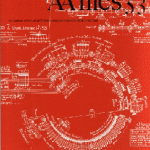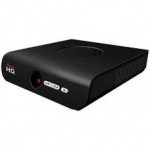Widescreen TV's are TV sets that have a screen format that are wider than standard TV sets. The normal widescreen format is an aspect ratio of 16:9. This is the same aspect ratio of films shown in most cinemas and widescreens allow the viewer at home to watch movies in their original format. A widescreen TV refers to the shape of a screen. Most standard TV's produce an image that has an aspect ratio of 4:3; this aspect ratio is similar to that of a square. Widescreen TV's are shaped Read More
Fiber TV
Fiber optics have quickly become a namesake in our modern world of technology. First there was the fiber optic Internet connection, then there were fiber optic landline telephones, and now there is fiver optic television. Fiber optic television is easy to use, provides more functionality than cable and satellite television, is highly reliable, and has much better quality than cable and satellite television. In this article, we will explain what fiber optic television is, how it compares with cable and satellite television, terms such as FTTN, FTTP, and HomePNA, and Read More
How to Edit Music
When making music, it can be difficult to get all the different instruments and voices to sync up perfectly. Someone might have played a little faster. The drummer might have been half a beat off. Whatever the reason, there are so many different reasons why there is a need to edit music. Depending on your resources, you might want to get an expensive program to edit music. However, for simple music editing, check out a program called Audacity. It's a free program that can handle most music editing that you Read More
What is an IP Camera?
An IP camera is a closed-circuit television camera that sends image data over a internet Protocol through an Ethernet connection. Because of their connectivity to the Internet, they are often times referred to as network cameras. Their primary use is in surveillance and, when connected to a digital video recorder (DVR), they can act as a powerful video surveillance system. Features of IP Camera The first main feature of an IP camera is the two way audio built into it. This makes it possible for someone in the control room Read More
The History of Satellite Television
In order to understand the history of satellite television, you first have to go all the way back to the 1950's during the space race between the USA and Russia. The first satellite to orbit the earth was Sputnik, launched by the Russians in 1957. It was 6 years later until the first communications satellite was launched. This satellite was developed by both large corporations and government entities. It was called Syncom II and flew in an orbit circling 22,300 miles over the Atlantic Ocean. Using this satellite, the first Read More
AA Files

AA, or Audible Audio files, are audio files which are organized in a format optimized for people listening to spoken text. This article will explain what AA files are, list their pros and cons, and list a few programs that are able to support or convert AA files. What are AA Files AA, or Audible Audio, files refer to a type of format that is used specifically for ebooks, text-to-speech software, and other documents. AA files allow users to listen to spoken text and store information relating to chapter markers, Read More
Digital to Analog TV Converter

Digital converter boxes receive the digital over-the-air ATSC (signals broadcast by local stations. These boxes have their channel tuners and can include closed-captioning decoding, V-chip 2.0 ratings, program guides, and their own remote control. Like a VCR, the converter box uses your television for the display and sound. Digital converter boxes have a coaxial input which connects to an ATSC-compatible antenna. For output, the converter box will also have a coaxial connector. Many televisions already have coaxial connectors and will require only a cable to connect to the television. Older Read More
VOD (Video on Demand)

Video on Demand is the term used for the system by which content providers allow their users to request visual and/or audio content and serve that content to their users, in contrast to programming that is established in advance which the user cannot control. VOD can also be referred to as AVOD (Audio Video on Demand). Most Video on Demand services allow the user fine control over the requested content, including pausing it, reviewing previously viewed content (also called “rewinding”), advancing through it (also called “fast-forward”), as well as slow-motion Read More
Dish Network Satellites
Dish Network, and their previously separated partner, EchoStar, have launched dozens of satellites over the past decade in order to provide direct broadcast satellite television services to their subscribers. While each satellite location, known as an “orbital location” provides services to a different region of the Earth, many of the orbital locations contain multiple satellites to increase available bandwidth and provide redundancy to cover any inoperable satellites in the area. Likewise, satellites in one orbital location can still provide service to satellite receivers in an area designated to a nearby Read More
What Does CGI Stand For?

CGI, or Computer-Generated Imagery, is the technology that allows for an artist to use a computer in order to construct an elaborate scene or even an entire movie without the need for special effects or other forms of illusion. A CGI film can either be entirely computer-generated or include actors, background scenes, special effects, and any other type of film trick. In this article, we will go over how CGI works, where CGI came from, and how it has transformed the movie market. How CGI Works In a CGI-created film, Read More


Share on: